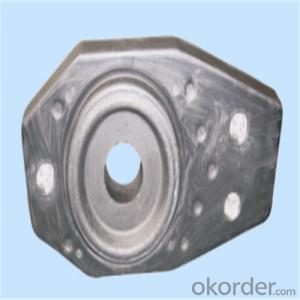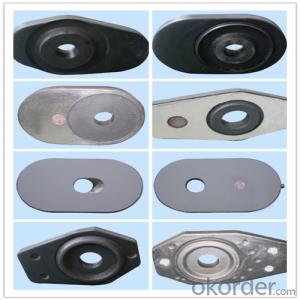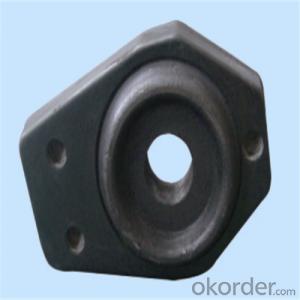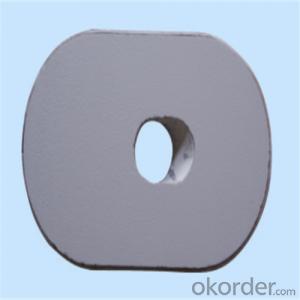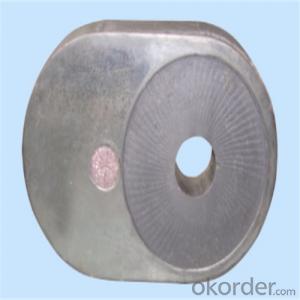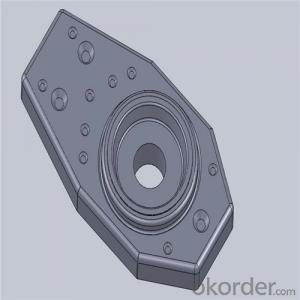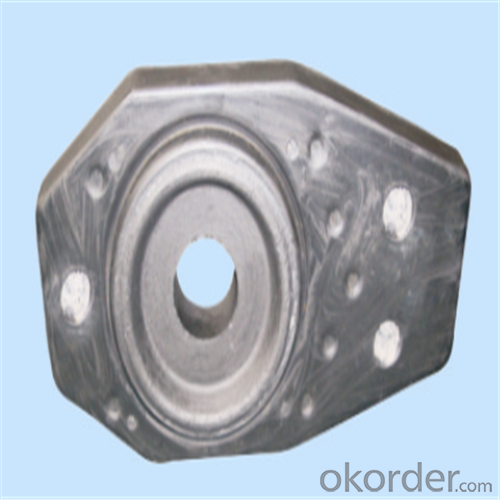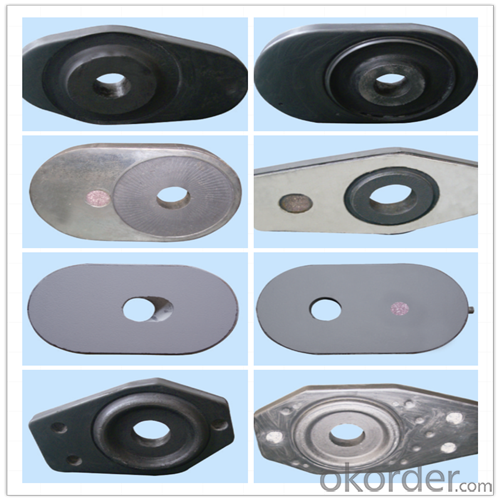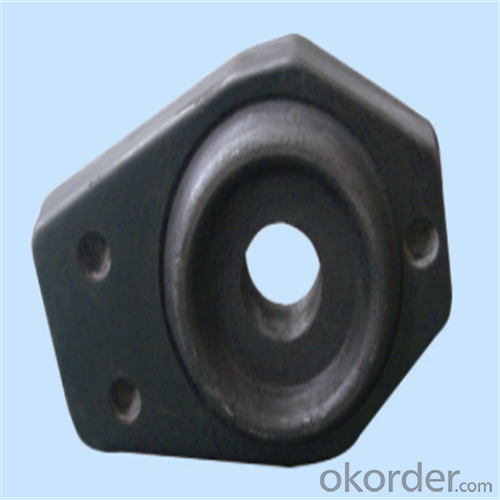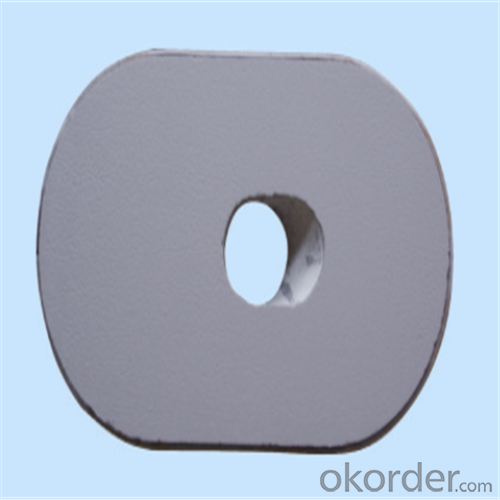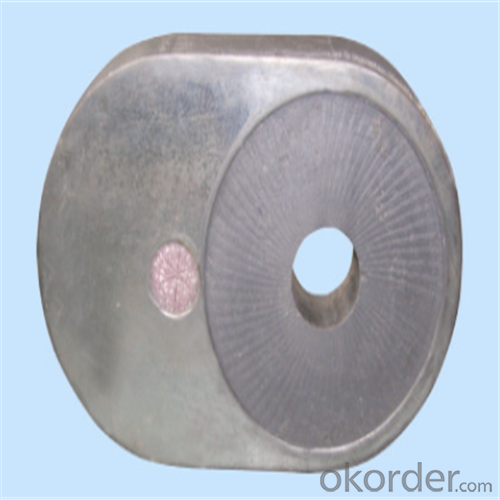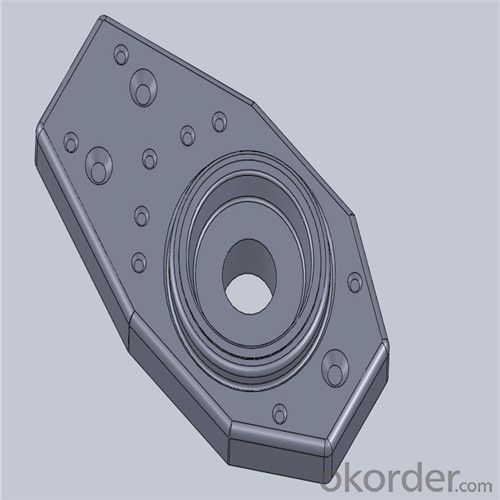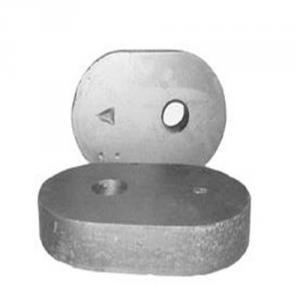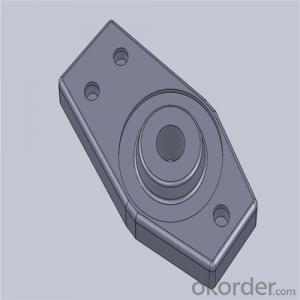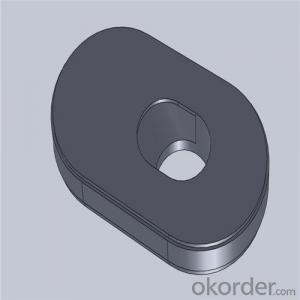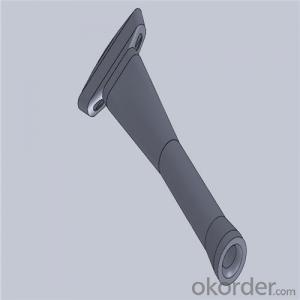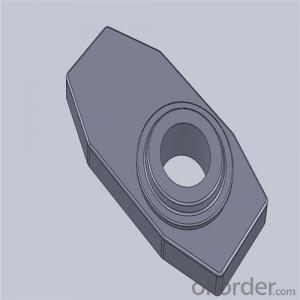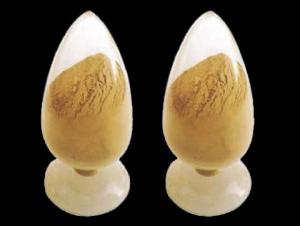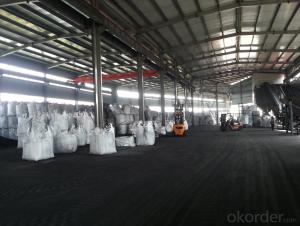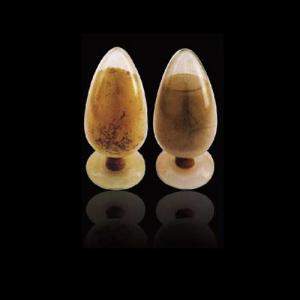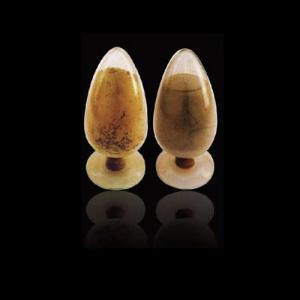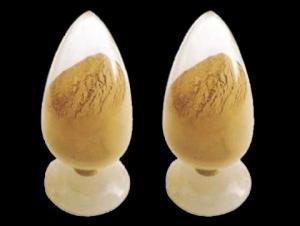Monolithic Refractories High Performance Ladle Slide Gate
- Loading Port:
- Shanghai
- Payment Terms:
- TT OR LC
- Min Order Qty:
- 100 pc
- Supply Capability:
- 1000 pc/month
OKorder Service Pledge
OKorder Financial Service
You Might Also Like
Quick Details for High Performance Refractory Ladle Slide Gate
| Place of Origin: | China (Mainland) | Shape: | Plate | Material: | Alumina Block |
| SiO2 Content (%): | N/A | Al2O3 Content (%): | 80-90% | MgO Content (%): | N/A |
| CaO Content (%): | N/A | Refractoriness (Degree): | 1770°< Refractoriness< 2000° | CrO Content (%): | N/A |
| SiC Content (%): | N/A | Model Number: | CS80 | Brand Name: | |
| Product name: | High performance refractory ladle slide gate | Model No.: | cs80 | Brand name: | CMAX |
| Quality: | Al-C or Al-Zr-C | Service life: | 4-6 heats | Apparent porosity: | 7% Max |
| Bulk density:: | 3.1 MIN | C.C.S: | 120MPA | MOQ: | 100 pcs for trial |
| Delivery time: | 60 working days upon receipt of deposit |
Packaging & Delivery
| Packaging Details: | Inner carton packing, outer wooden case suitable for long term sea shipping |
| Delivery Detail: | three months working days upon receipt of deposit |
Specifications
Surface flatness less than 0.05mm
High mechanical strength
Erosion resistance
Oxidation resistance
Thermal shock stability
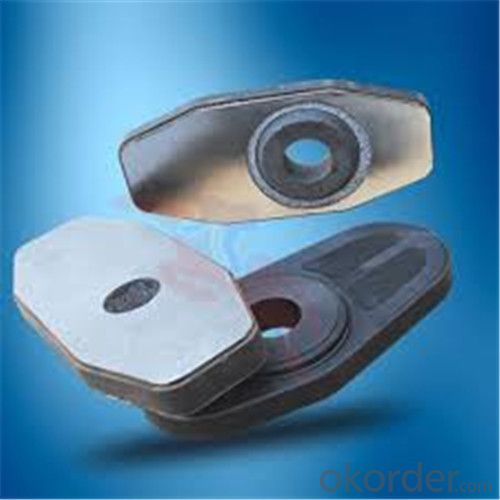
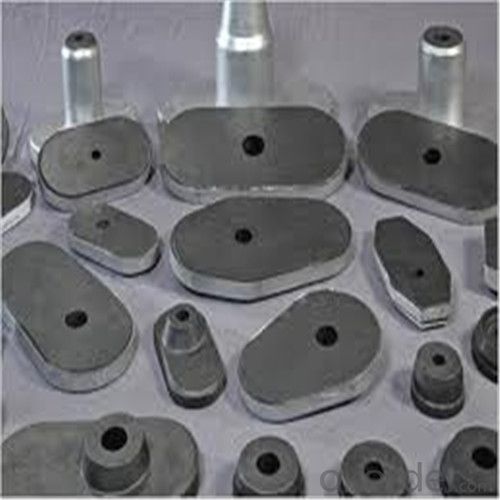
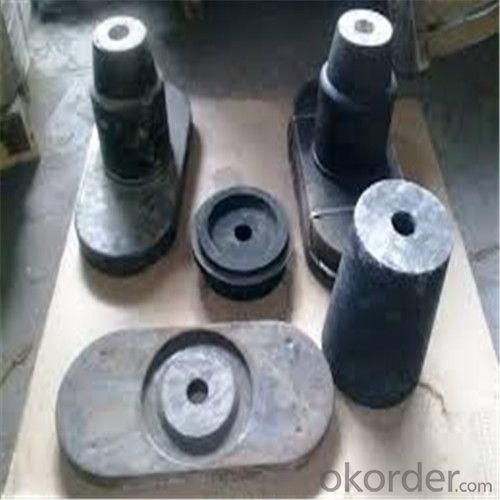
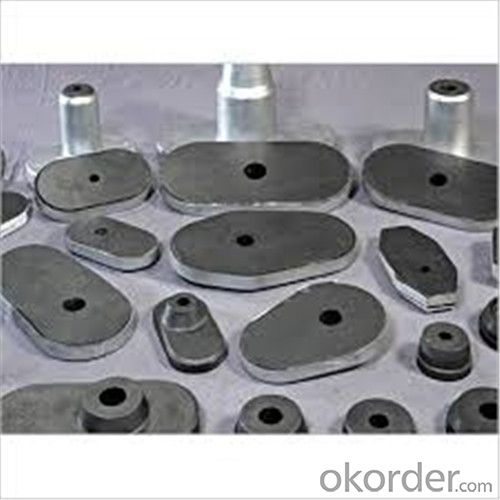
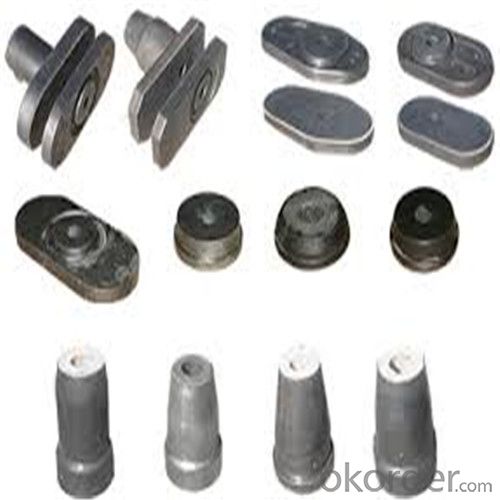
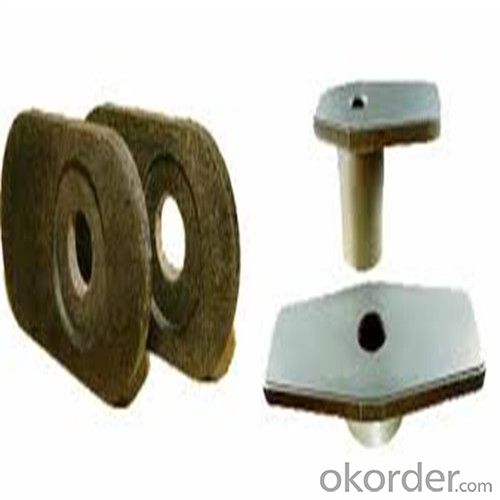
General Chemical Analysis for refractory ladle slide gate :
slide gate plate widely including Alumina carbon and Alumina Zirconia Carbon slide gate plate, MgO and MgO-spinel slide gate plate,nonoxides bonding slide gate plateand unburned slide gate plate.
Alumina -Zirconia-Carbon material
| Al-Zr-C Material | |||||
| Al2O3 | C | ZrO2 | Apparent porosity | Bulk density | C.C.S |
| (% minm) | (% minm) | (% minm) | (% max) | (gm./cc minm) | (MPa minm) |
| 85 | 3 | 5 | 7 | 3.1 | 120 |
| 85 | 3 | 4 | 7 | 3.1 | 120 |
Composite type: Al-Zr-C for working line, outer Al-C material
| Al-Zr-C & Al-C Material | ||||||
| Al2O3 | C | ZrO2 | Apparent porosity | Bulk density | C.C.S | |
| (% minm) | (% minm) | (% minm) | (% max) | (gm./cc minm) | (MPa minm) | |
| Inner side (Working face) | 85 | 3 | 4 | 7 | 3.1 | 120 |
| Outside | 90 | 3 | 0 | 9 | 3 | |
Sample is on your request.
Welcome to visit our factory~
- Q: How are monolithic refractories applied in the hot face and cold face of furnace linings?
- Monolithic refractories are commonly used in furnace linings because of their superior thermal and mechanical properties. These materials are applied in both the hot face and cold face of furnace linings, but the application process differs for each. In the hot face of furnace linings, monolithic refractories are applied to withstand the extreme temperatures and harsh conditions. This is the area that directly faces the heat source and is exposed to the highest temperatures. Here, the refractory material is specifically designed to have excellent thermal conductivity and high resistance to thermal shock. To apply monolithic refractories in the hot face, a technique called gunning is commonly used. Gunning involves spraying or troweling the refractory material onto the surface of the lining. This technique allows for quick and efficient application, ensuring a uniform and dense layer of refractory material. Gunning is particularly suitable for areas with complex shapes and contours. On the other hand, in the cold face of furnace linings, the primary concern is insulation and protection. The cold face is the area that is not in direct contact with the heat source and experiences lower temperatures. Here, the refractory material is designed to have low thermal conductivity and high insulation properties. The application of monolithic refractories in the cold face is typically done using a technique called ramming. Ramming involves compacting the refractory material into place using a pneumatic or hydraulic ramming tool. This technique ensures a dense and solid layer of refractory material, providing excellent insulation and protection against heat loss. Overall, monolithic refractories play a crucial role in furnace linings, as they provide the necessary thermal insulation and mechanical strength required in high-temperature environments. The application techniques of gunning and ramming allow for efficient and effective installation in both the hot face and cold face of furnace linings.
- Q: How do monolithic refractories contribute to the overall efficiency of iron and steel production?
- Monolithic refractories play a crucial role in enhancing the overall efficiency of iron and steel production. These refractories, which are made from a single material, provide exceptional thermal insulation, resistance to high temperatures, and excellent mechanical strength. By lining the furnaces, ladles, and other equipment used in the production process, monolithic refractories help in maintaining and regulating the required high temperatures for melting, refining, and shaping iron and steel. This insulation reduces heat loss, minimizes energy consumption, and ensures a more efficient and cost-effective production process. Additionally, the mechanical strength of monolithic refractories allows for better protection against wear and tear, resulting in increased equipment lifespan and reduced downtime for repairs and maintenance. Overall, the use of monolithic refractories significantly contributes to the efficiency, productivity, and sustainability of the iron and steel production industry.
- Q: How do monolithic refractories contribute to energy efficiency in iron and steel production?
- Monolithic refractories play a crucial role in enhancing energy efficiency in iron and steel production processes. These refractories are unshaped materials that are used to line the various components of furnaces, kilns, and other high-temperature equipment involved in the production of iron and steel. One way monolithic refractories contribute to energy efficiency is by providing excellent insulation. These materials have low thermal conductivity, which means they effectively reduce heat transfer from the furnace or kiln to the surrounding environment. By minimizing heat loss, monolithic refractories help maintain high temperatures within the production units, which in turn reduces the energy required to sustain the desired operating conditions. Furthermore, monolithic refractories offer superior resistance to thermal shock and wear, ensuring the longevity of the lining materials. This durability reduces the need for frequent repairs and replacements, leading to less downtime and increased operational efficiency. As a result, energy is conserved since the production units can continuously operate at optimal temperatures without interruptions. In addition, monolithic refractories have excellent resistance to chemical reactions, corrosion, and erosion caused by molten metals and slag. This resistance reduces the formation of cracks and defects in the lining, which can compromise the insulation and increase heat loss. By maintaining a robust and intact lining, monolithic refractories contribute to energy efficiency by minimizing heat escape and ensuring the efficient utilization of energy for the iron and steel production processes. Moreover, the use of monolithic refractories allows for design flexibility in the construction of furnaces and kilns. Their ability to be shaped and applied in various configurations enables the creation of optimized lining structures that enhance heat transfer and combustion efficiency. This flexibility empowers engineers and operators to design and modify the production units to maximize energy efficiency and minimize energy wastage. Overall, monolithic refractories contribute significantly to energy efficiency in iron and steel production by providing excellent insulation, durability, resistance to thermal and chemical degradation, and design flexibility. By reducing heat loss, minimizing repairs and replacements, and optimizing heat transfer, these refractories play a vital role in conserving energy and improving the overall sustainability of the iron and steel industry.
- Q: How are monolithic refractories used in the repair and maintenance of ladle and tundish covers?
- Due to their excellent thermal resistance and durability, monolithic refractories are commonly utilized for repairing and maintaining ladle and tundish covers. These covers play a crucial role in the containment of molten metal and the prevention of heat loss during the steelmaking process. When exposed to high temperatures and thermal cycling, ladle and tundish covers can undergo wear and tear, resulting in cracks, spalling, or even complete failure. This is where monolithic refractories come into play. Monolithic refractories are refractory materials that are not shaped and can be easily molded and applied to damaged areas of ladle and tundish covers. They can be cast, gunned, or sprayed onto the surface, enabling quick and efficient repairs. Typically, these refractories consist of a matrix material, such as alumina, silica, or magnesia, along with various additives and bonding agents. The specific composition depends on the application requirements and severity of operating conditions. The repair process begins by identifying the damaged areas of the ladle or tundish cover. Any loose or damaged refractory material is removed, and the surface is prepared for the application of the monolithic refractory. This may involve cleaning, roughening, or even preheating the surface, depending on the specific requirements. The monolithic refractory is then mixed with water or a suitable binder to achieve a workable consistency. It is then applied to the damaged areas using the appropriate method, such as casting or spraying. After application, the refractory material is allowed to dry and cure, typically through controlled heating. Once cured, the monolithic refractory forms a robust and durable lining that can withstand the high temperatures, thermal cycling, and chemical reactions occurring during ladle and tundish operation. It provides excellent thermal insulation, minimizing heat loss and reducing energy consumption. Moreover, monolithic refractories exhibit superior resistance to slag, metal penetration, and erosion, ensuring extended service life for ladle and tundish covers. They also possess good thermal shock resistance, enabling them to endure rapid temperature changes without cracking or spalling. In conclusion, monolithic refractories are indispensable for repairing and maintaining ladle and tundish covers due to their thermal resistance, durability, and ease of application. Their ability to withstand high temperatures, thermal cycling, and chemical reactions ensures the integrity and efficiency of ladle and tundish operations in the steelmaking industry.
- Q: How do monolithic refractories withstand mechanical stress in the iron and steel industry?
- Monolithic refractories are designed to withstand mechanical stress in the iron and steel industry through their unique composition and properties. These refractories are made up of a single, uniform structure, as opposed to traditional brick-like refractories that consist of multiple pieces. This monolithic structure provides several advantages in terms of mechanical stress resistance. Firstly, monolithic refractories possess a higher strength and density compared to traditional refractories. This allows them to better withstand the mechanical forces exerted during various processes in the iron and steel industry, such as the movement of molten metal, the impact of scrap materials, or the pressure from gases and liquids. Their superior strength and density help prevent cracking, deformation, or failure under these stress conditions. Additionally, monolithic refractories offer excellent thermal shock resistance, which is crucial in the iron and steel industry. The rapid heating and cooling cycles experienced in processes like steelmaking or iron casting can cause thermal stress on refractories. However, the monolithic structure of these refractories allows for better thermal conductivity and expansion, reducing the risk of thermal shock damage. This ability to withstand thermal stress contributes to their overall mechanical stress resistance. Moreover, monolithic refractories can be customized and applied on-site, providing a seamless lining that eliminates joints or weak spots. This seamless application ensures a more uniform distribution of stress and prevents the formation of cracks or gaps that could weaken the refractory lining. By eliminating these vulnerabilities, monolithic refractories enhance their ability to resist mechanical stress in the demanding conditions of the iron and steel industry. In conclusion, monolithic refractories withstand mechanical stress in the iron and steel industry through their high strength and density, superior thermal shock resistance, and seamless application. These properties enable them to endure the intense mechanical forces encountered during various processes, ensuring the longevity and efficiency of refractory linings in this demanding industry.
- Q: How do monolithic refractories perform in reheating furnace roof applications?
- Monolithic refractories perform exceptionally well in reheating furnace roof applications due to their superior thermal shock resistance, high strength, and excellent resistance to chemical attack at high temperatures. These refractories provide a reliable and durable lining that can withstand the extreme conditions of reheating furnaces, ensuring efficient heat transfer, reduced maintenance, and prolonged furnace life.
- Q: How do monolithic refractories improve the efficiency of ladle and tundish purging furnaces?
- Monolithic refractories improve the efficiency of ladle and tundish purging furnaces by providing better insulation, reducing heat loss, and enhancing the overall thermal efficiency of the furnaces. These refractories have high thermal conductivity and low thermal expansion, allowing for better heat transfer and uniform temperature distribution. Additionally, their superior resistance to thermal shocks and chemical attacks prolongs the lifespan of the furnaces, reducing maintenance and downtime.
- Q: How do monolithic refractories mitigate heat loss in iron and steel operations?
- Monolithic refractories mitigate heat loss in iron and steel operations by creating a strong and continuous lining that insulates the furnace or kiln, reducing the transfer of heat to the surrounding environment. This lining is made of a single, seamless material, which eliminates joints or gaps that could allow heat to escape. Additionally, monolithic refractories have high thermal conductivity and low thermal expansion, allowing them to withstand extreme temperatures while minimizing heat loss.
- Q: What are the common testing methods used to evaluate the performance of monolithic refractories?
- The common testing methods used to evaluate the performance of monolithic refractories include thermal conductivity testing, hot modulus of rupture testing, abrasion resistance testing, thermal shock resistance testing, and corrosion resistance testing.
- Q: What are the main challenges in designing the lining system with monolithic refractories?
- Achieving proper installation is one of the primary difficulties in designing the lining system using monolithic refractories. Skilled labor and precise application techniques are required for the installation, which can involve casting, gunning, or shotcreting. The performance and longevity of the lining system can be compromised if any errors or inconsistencies occur during installation. Ensuring sufficient bonding between the monolithic refractories and the existing structure presents another challenge. To prevent delamination or separation of the refractory material from the underlying surface, proper adhesion is crucial. Factors like surface preparation, temperature differences, and mechanical stress can affect the strength of the bond, necessitating careful consideration during the design phase. The compatibility of monolithic refractories with different operating conditions also poses a challenge. Refractory materials are exposed to extreme temperatures, chemical reactions, and thermal cycling, which can result in degradation and failure. Designing a lining system that can withstand these conditions requires a thorough understanding of the refractory properties and the specific requirements of the application. Furthermore, selecting the appropriate monolithic refractory material for a given lining system is a significant challenge. There are various types of monolithic refractories available, each with its own advantages and disadvantages. When choosing the most suitable material for the application, factors like temperature range, chemical composition, thermal conductivity, abrasion resistance, and thermal shock resistance must be taken into account. Lastly, maintaining the integrity of the monolithic refractory lining system throughout its lifespan is challenging. Regular inspections, repairs, and maintenance are necessary to address issues such as cracks, erosion, or spalling. Developing a comprehensive maintenance plan and ensuring access to skilled personnel for repairs are crucial aspects of designing a successful lining system with monolithic refractories.
Send your message to us
Monolithic Refractories High Performance Ladle Slide Gate
- Loading Port:
- Shanghai
- Payment Terms:
- TT OR LC
- Min Order Qty:
- 100 pc
- Supply Capability:
- 1000 pc/month
OKorder Service Pledge
OKorder Financial Service
Similar products
Hot products
Hot Searches
Related keywords
